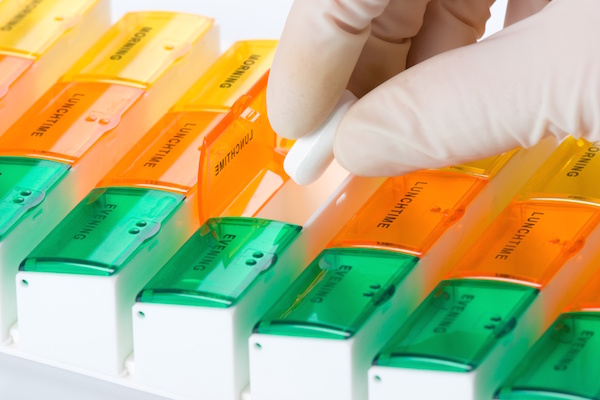
MONDAY, April 23 (HealthDay News) — Dozens of medications are available to prevent debilitating migraine headaches, but most migraine sufferers don’t use them, a new study finds.
“Approximately 40 percent of people with migraines need preventive treatment, and only about one-third of them are actually getting it,” said Dr. Stephen D. Silberstein, co-author of new guidelines developed by the American Academy of Neurology and the American Headache Society.
The drugs include prescription, over-the-counter and herbal medications. Which will work best “depends on the patient,” said Silberstein, director of the Jefferson Headache Center at Thomas Jefferson University in Philadelphia.
The guidelines, published in the April 24 issue of Neurology, were scheduled for presentation at the academy’s annual meeting in New Orleans, April 21 to 28.
Dr. Brian M. Grosberg, director of the Montefiore Headache Center in New York City, said recent studies have shown that preventive treatment is underutilized by both patients and their physicians.
“Although there is no cure for migraine, preventive medications can decrease migraine occurrence by 50 percent or more, as well as reduce the severity and duration of headaches that do occur,” said Grosberg, who was not involved with writing the guidelines.
Most preventive treatments are taken daily day, unlike medications taken to relieve the pain and other symptoms of a migraine attack once it occurs.
According to the American Academy of Neurology, migraines were the cause of more than 3
million emergency room visits in the United States in 2008. Symptoms can include throbbing or pulsing in one area of the head, nausea, vomiting and extreme sensitivity to light and sound. Migraine attacks are more common in women, and may last for hours or days.
The new guidelines include information from 29 studies published between 1999 and 2009 that describe effective preventive treatments for migraine. They state that:
- Among prescription drugs, strong evidence shows that anti-epileptic drugs such as Depakote (divalproex sodium), Topamax (topiramate) and sodium valproate as well as the blood pressure drugs metoprolol (Lopressor, Toprol), propranolol (Inderal) and timolol (Blocadren) — which belong to the class of medications known as beta blockers — reduce the number of migraine attacks and their severity.
- The seizure drug lamotrigine (Lamictal) was not shown to prevent migraine.
- Frova (frovatriptan), one of a class of drugs originally developed to treat migraines, seems to be effective against menstrual-related migraines.
- The antidepressant Effexor (venlafaxine) appears to have some preventive benefit.
- Over-the-counter drugs Motrin (ibuprofen) and Aleve (naproxen) as well as riboflavin (vitamin B2) and the herb butterbur may also play a role in prevention.
Silberstein said that that if all the drugs work equally well, people should consider other diseases the drugs treat and use any side effects to your advantage.
If you’re obese, for example, Topamax might be your best bet as a side effect is weight loss, he said.
People with epilepsy should consider Depakote and those with depression an antidepressant such as Effexor, he noted.
Grosberg said patients should discuss the options with their doctor. “There are many effective preventive strategies. It’s important that the headache sufferer and treating physician work together to find the optimal treatment approach,” said Grosberg.
“The preventive strategy should always be tailored to the individual patient, bearing in mind personal preference, co-existing medical conditions, frequency of dosing and cost, as well as other factors,” he added.
Silberstein added that even people who take over-the-counter or herbal treatments should see their doctor for follow-up because all medications can cause side effects or interact with other drugs.
More information
The American Academy of Neurology has more on the new migraine guidelines.

